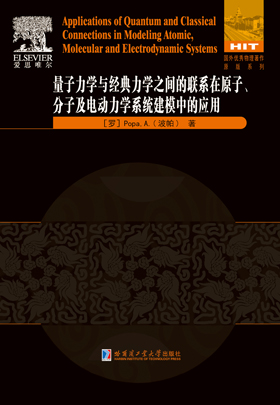【目 录】
Introduction
1 Wave Model for Atomic Systems//1
1.1 General Considerations//1
1.2 Solution for Helium-Like Systems//2
1.3 Evaluation of the Correction Term //5
1.4 Solution for Lithium-Like Systems//9
1.5 Geometric Symmetries and Periodic Solutions of the HamiltonJacobi Equation//18
1.6 Typical Applications//19
1.7 A More General Method Applied to the Nitrogen Atom//32
1.8 General Relations Derived for the Central Field Method//34
2 Wave Model for Molecular Systems//37
2.1 General Considerations//37
2.2 Calculations of the Curves Corresponding to Single,Double,and Triple Bonds of Homonuc1ear Molecules and to Ionic and Covalent Bonds of Heteronuclear Molecules//38
2.3 Calculations of Geometric Parameters of Diatomic Molecules//46
2.4 Analytical Method Used to Calculate the Energetic Values of Diatomic Molecules//58
2.5 Typical Applications//63
3 Modeling Properties of Harmonics Generated by Relativistic Interactions Between Very Intense Electromagnetic Beams,Electrons,and Atoms//85
3.1 Gel1eral Considerations//85
3.2 Radiations Generated at the Interactions Between Very Intense Laser Beams and Electron Plasmas//86
3.3 Hard Radiations Generated at the Head-on Collision Between Very Intense Laser Beam and Relativistic Electron Beam//89
3.4 Effects in Collisions at Arbitrary Angles Between Very Intense or Polarized Laser Beams,and Relativistic Electron Beams//92
3.5 Calculation of the Harmonic Spectrum of the Radiations Generated at the Interaction Between Very Intense Laser Beams and Atoms//94
Conclusions//101
Appendix A: Details of Calculation of the Correction Term Em1s//103
Appendix B: Mathematica 7 Programs//107
Bibliography//133




